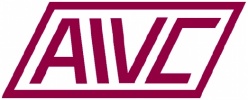Ventilation represents a very high part of the building’s energy load. Increased envelope protection combined with the significant increase of the ambient temperature, turn ventilation into one of the major energy consuming uses requiring the development and use of innovative and efficient new technologies to minimise the ventilation energy load. In parallel, the increase of the ambient temperature induced by global and local overheating increases the cooling load of buildings and decreases the cooling potential of ventilation
The recent development of super cool materials, exhibiting up to 20 oC sub ambient surface temperature under the summer sun, offers new opportunities for the building sector. Super cool materials including photonic, fluorescent, and caloric devices, can provide free cooling or even heating to buildings when used as passive components integrated to building envelope, or active devices to provide free precooling and ventilation.
The specific webinar aimed to inform designers, engineers, architects, researchers and building professional on the potential of super cool materials, their potential use for ventilation and mitigation purposes, and the future implementation path to be followed.
This webinar was organized by the Air Infiltration and Ventilation Centre - AIVC in collaboration with venticool & the University of New South Wales - UNSW. The webinar was facilitated by INIVE.
Programme (CET)
- 09:00 | Urban Overheating. Impact and mitigation, Mat Santamouris, UNSW, Australia | Recordings, Slides
- 09:15 | Results of the Cool Roofs Study in Australia, Riccardo Paolini, UNSW, Australia | Recordings, Slides
- 09:35 | Questions and answers
- 09:50 | Recent developments of Super Cool Materials, Jie Feng, UNSW, Australia | Recordings, Slides
- 10:10 | Recent developments on Fluorescent super cool materials, Samira Garshasbi, Arup, Australia | Recordings, Slides
- 10:30 | Questions and answers | Recordings
- 10:45 | End of the webinar
For further information please scroll down to download the flyer and slides.





